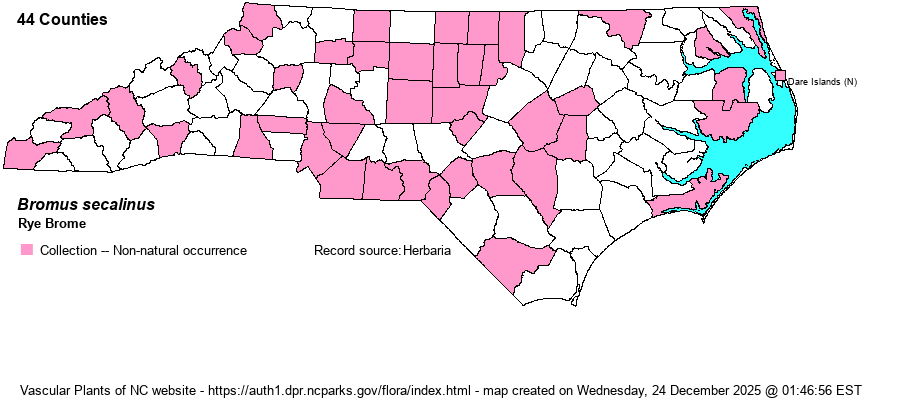| Author | L. | |
| Distribution | More-or-less throughout the state; gaps in the Mountains and upper Piedmont, and on the Coastal Plain.
Native to Europe; in N.A. widespread in the U.S. and southern Canada. | |
| Abundance | Frequent in the middle parts of the state, uncommon in the eastern and western parts. | |
| Habitat | Roadsides, fallow fields, disturbed soils, waste ground. | |
| Phenology | Flowering and fruiting May-August. | |
| Identification | Rye Brome is similar in gestalt to B. racemosus/commutatus and B. japonicus, but it has distinctly shorter awns. | |
| Taxonomic Comments | Bromus is an important genus of grasses for their value as forage (many species) or for the harm they cause to the guts of grazing animals (a few species). In most of our species, inflorescences arch over and cause the spikelets to droop; thus the plants are often graceful looking. Bromus, Festuca, and Poa all can look quite similar to beginners (and even veterans!), because they all have multi-flowered spikelets. Generally speaking, Bromus taxa have much the largest spikelets, and most Poa taxa have a tuft of wispy hairs at the base of each floret (lacking in the other genera). Bromus and Festuca taxa have obvious awns on the florets that are absent in Poa taxa. With field experience and careful use of keys, one can eventually handle these genera. | |
| Other Common Name(s) | | |
| State Rank | SE | |
| Global Rank | GNR | |
| State Status | | |
| US Status | | |
| USACE-agcp | | |
| USACE-emp | | |

